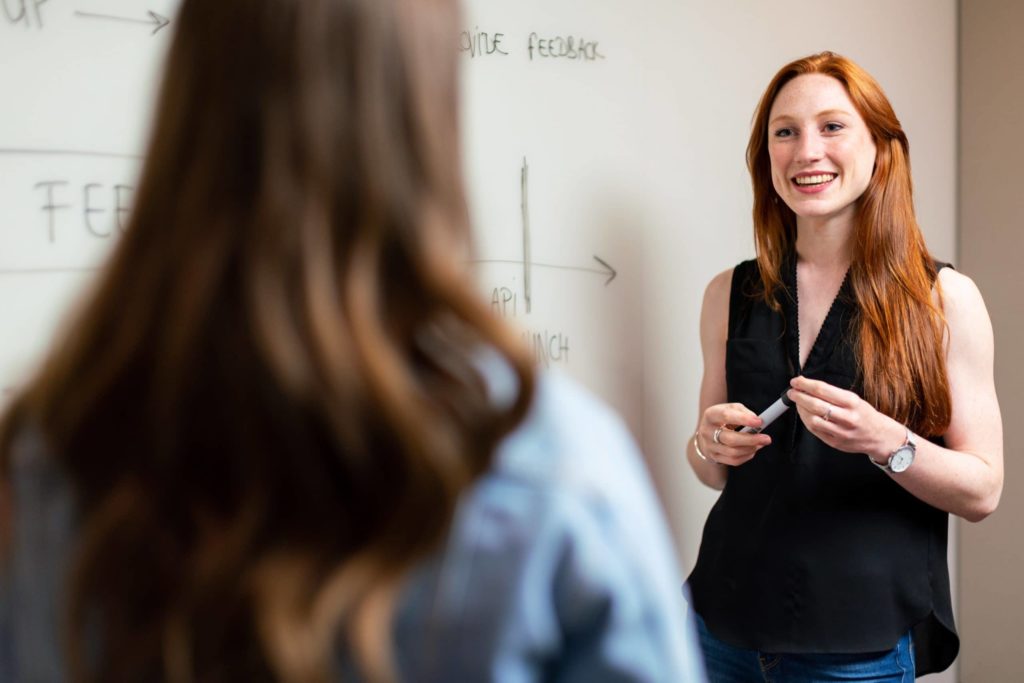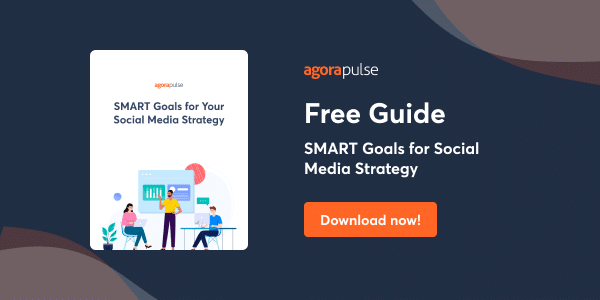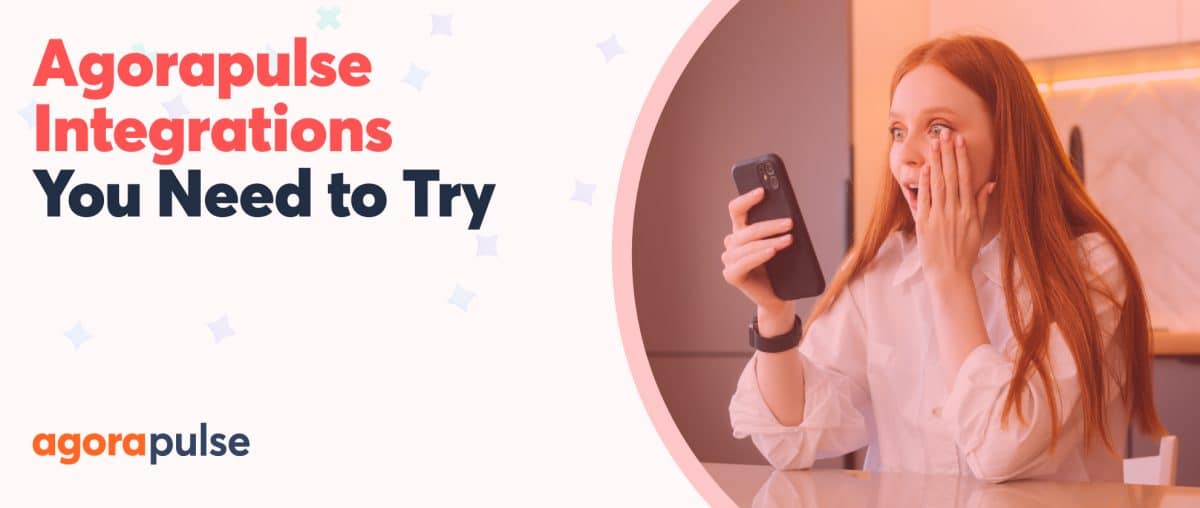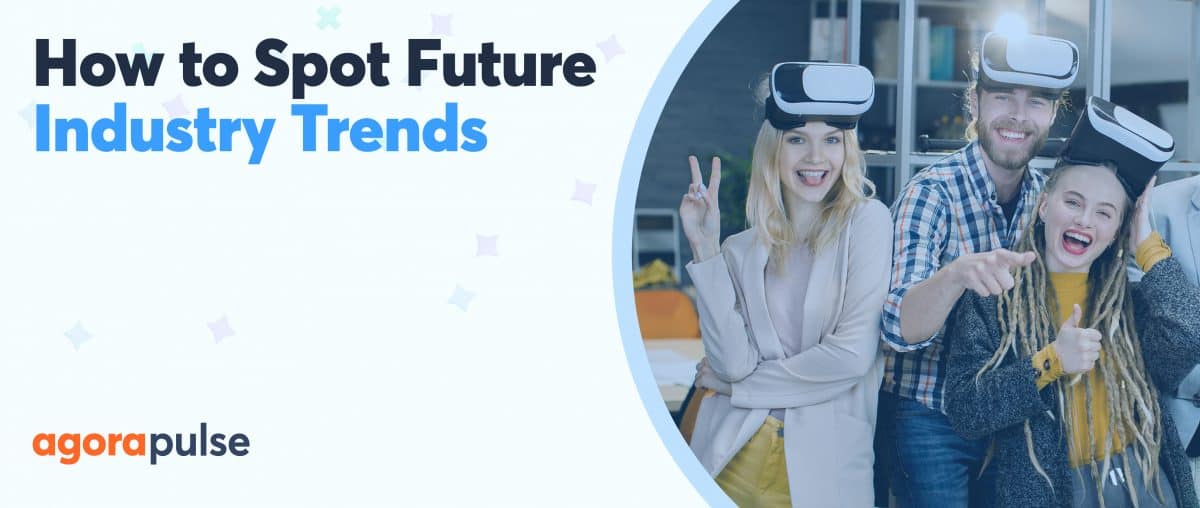Struggling to get your brand heard online? Need to stand out from the other social media managers and agencies? We’ve got tips from Stephanie Liu about how to captivate your audience.
Do you ever wonder how some people seem to effortlessly command authority when speaking? In this post, we’ll explore a technique you can use to boost your confidence and captivate your audience whether you’re speaking on stage, on live video, or in person.
On a recent episode of Social Pulse Weekly, I sat down with Stephanie Liu, founder of Captivate on Command and the host of Lights, Camera, Live!, to find out how she uses NLP (Neuro-Linguistic Programming) to captivate her audience.
Stephanie is a Master Neuro-Linguistic Programming Practitioner and co-author of the upcoming book “Ultimate Guide to Social Media Marketing.” She helps brands communicate with confidence, so they can ignite their ideas and be brilliant for prospects and customers alike.
Stephanie is a wealth of information regarding communication, confidence, and live streaming, so I know you’ll enjoy her insights as much as I did.
Q. What exactly is NLP, and how did you get started with it?
Stephanie Liu: “NLP stands for Neuro-Linguistic Programming. The ‘Neuro’ references neurology, ‘Linguistic’ is how 
“There are certain behaviors we carry out regularly … For instance, getting up every morning and brushing our teeth. There’s a certain way we do this, and it’s important to understand how our minds work and how they’re programmed. This also applies to our relationships, and to how we handle business. For instance, how you make a sales call is going to have a major impact on your life.
“It would be like going to a different country and ordering a steak, but the waiter brings you something totally different, like spaghetti. Something gets lost in transition. But when you understand how your mind works and how other people function, it makes life a lot easier.
“I got started with NLP when I worked in an agency. For anyone who is a marketer, you’ll know how important it is to win the pitch. One of the important trainings we had there was learning NLP because we wanted to learn how to increase our impact and our influence. And understanding how the mind works is one of the best ways to do that.”
Q. You also have a degree in cognitive psychology, so this is nothing new to you. How do cognitive psychology and NLP work together?
Stephanie Liu: “Cognitive psychology is about understanding the way people think and learn. Everything from how you learn new skills, attention, perception, how your mind actually forms who you are, and who you’re going to be.
“For instance, if you meet someone who is always negative, you might wonder why they’re like that. But it’s just how they function. When you understand how people are, you can respect that that’s their work and their belief. And you can play into that without being triggered.
“Here’s another example: If you ask a friend how an event was and she responds, ‘Not bad,’ how do you know what this means? On a scale of 0 to 10, where does ‘not bad’ fall? When you understand other people’s definitions of the world and their beliefs, it makes it so much easier to have those conversations.”
Q. How do you apply all this knowledge about psychology and NLP to understand where people are coming from, and what they want?
Stephanie Liu: “I’ll give you a real-life example.
“When I was launching my Lights, Camera, Live signature program, I got an email from a prospective student asking for more information about the course. I knew if I just responded back with a PDF outlining everything, that wasn’t going to satisfy her, and it wasn’t going to win the sale.
“I could tell she was the type of person who was very, very detail-oriented, and the more detail I could give her in my response, the better rapport I would have with her. Just knowing that small act got me the lead.
“Here’s another example that really cracked me up. I was staying at an Airbnb and the host was a salesman at a luxury car dealership. He started to ask me about NLP and asked if he could use it in personal relationships, for instance, with the woman he was dating. I said yes and explained it could be used to answer questions like, ‘What is her communication style? What motivates her in a relationship? What are the values she’s looking for in a partner?’
“He goes on to tell me how one moment she’s thinking he’s cute, and the next she’s starting to feel uncomfortable about something. She’s started to back off, and his default response is this: ‘OK, sounds like there’s a problem. Go ahead and give me a call and let’s discuss it.’ He immediately gives a business response because that’s his default programming. I told him you can do that in sales, but in a personal relationship, you’re going to have to have to shift your communication style to get the results you want.”
Q. How can we keep from getting overwhelmed so we can get everything done?
Stephanie Liu: “There’s an NLP technique called collapsing anchors, which helps you move from a negative emotional state into a positive one. When I’m feeling overwhelmed, I ask myself what emotional state I have to be in to get me out of feeling overwhelmed.
“Then I start to seek opportunities that will get me to that emotional state—in this case, excitement. Once I start to feel excited, I feel more confident. And when I’m confident, I start to feel powerful.
“When I first became an entrepreneur, I had all these negative thoughts: I’m not good enough, I need more experience, I need more certifications, etc.. That was something that was holding me back in my business. But if you can understand there’s a certain belief that’s holding you back, and you can untangle [things] to get to that belief, it opens up a whole new world for you.”
Q. Let’s say you’re having a really bad morning. You slept through your alarm, and things just aren’t going your way. How do you pivot from “This is a crappy day” to “Let’s make this the best day ever?”
Stephanie Liu: “I believe your attitude determines your altitude in life. The other day, I was feeling off my game because my 4-year-old was up all night coughing and sneezing. Then in the morning, we ran out of coffee. It was just a terrible start to the day. But I really didn’t want my day to be like that, so I said, ‘Let’s go ahead and hit the reset button.’ I restarted my day. That’s one of the things I do to take charge of my mindset. I know what motivates me, I know what aggravates me, and I protect that energy.”
Q. We recently had the amazing Amy Landino on the show to talk about her book “Good Morning, Good Life.” Do you have any morning or evening rituals that set you up for success?
Stephanie Liu: “There’s one ritual I do with my daughter every single night. Throughout the entire day, she’s getting suggestions from the radio, music, and commercials, and her unconscious mind is listening to it. I want to make sure all the suggestions she’s getting in her life are positive.
“So every night, we say, ‘Dear unconscious mind, you know the suggestions that are good for me and those that are bad. Please keep the ones that are good, and delete the ones that aren’t.’ I want her mind to know which values are good and which are bad, and to wake up every morning and just remember, ‘My mommy and daddy love me, no matter what.'”
Q. You have an amazing live show. How do you use your research and trainings to make your live show and on-stage presence better? Is there anything you always do before you get on stage?
Stephanie Liu: “Yes! Whenever I speak, I stomp on the stage. To me, it’s creating an anchor onto that stage that says, ‘I own this. This stage doesn’t scare me.’ Whatever happened on that stage before doesn’t matter; if there was another presenter on the stage before me who totally bombed, I’m clearing the air, clearing the space. It’s putting my own energy on it.
“I also use a lot of storytelling to put my audience into a trance-like state. I know your brain’s going to pause on that for a second! To understand what I mean by a trance, here’s an example: When you’re in your car driving somewhere, and you don’t know how you got to your destination because your movements are running on automatic. There’s a reason radio commercials are still a thing! Any of the commercials that are happening during that trance-like state are going into your unconscious mind.
“When I’m on stage telling a story, there are little bits of embedded commands I plug in. By the way, you know when your audience is in a trance because they will not move. Their eyes are dead on you. It’s the craziest thing because you can see them fall deeper and deeper into a trance-like state. So that’s one of the things I do a lot on stage: hypnosis. I’m a trained hypnotherapist, and if you ever watch any of my courses, it’s all in there.
“Earlier I talked about the idea of chained anchors: how to get from an emotional state of feeling overwhelmed to feeling powerful. You can do the same thing when you’re giving a presentation. What are the stories you have to tell to get your audience from frustrated, to confident to powerful?
“The other thing I do is have anchors on stage. If I want my audience to feel frustrated, there’s a certain part of the stage I’m working on. I’ll say, ‘Remember that time? Isn’t that frustrating? Don’t you want to feel more confident?’ I’m putting my anchors where they are. If I ever want to tell you something positive, it’s always going to be on one side of the stage, and if it’s anything bad, it’s going to be the other side.
“Someone [in the comments] mentioned the importance of future pacing yourself before a presentation. But you can also future pace your audience. For instance, you could say something like: ‘You’ve just spent the past 25 minutes learning a little bit about NLP. Now just imagine what you could actually do once you get trained. Think of all the opportunities and doors that are going to open to you.”
Q. Your workflow is amazing! What are the top 3 apps you use to make yourself more productive?
Stephanie Liu: “First of all, I love Agorapulse. When I’m livestreaming, the comments pop up rapidly, and having Agorapulse on my phone makes it so much easier. I love to engage with my audience. If they know that I’m going to instantly comment back to them, it triggers all those happy brain chemicals like dopamine, oxytocin, serotonin, and endorphins. Having Agorapulse on my phone allows me to create that rapport deeper with my audience.
“My other favorite app is Messenger. I love talking to people, and I like the voice functionality Messenger has. As a trained hypnotherapist, it’s really easy for me to talk to people and get to the root of the problem so I can help them out. Messenger is really helpful for this.
Another tool I love is the Shortcuts app. I’m usually running from one event to another. So to have shortcuts that tell my husband, ‘Hey, I’m on my way home. Do you want something for dinner?’ or ‘Can I get directions to the next event?’ is brilliant to me.
Q. What are some gadgets or tech gear you can’t live without?
Stephanie Liu: “The camera I’m using to livestream right now is the Panasonic Lumix GH5, and it’s a complete game-changer … but it’s also super-heavy. So I also have the DJI Osmo Pocket, which is a camera and gimbal all in one. It’s cool because it follows me around, so I can use it for vlogging too.
“Another gadget I love is the controller wheel that attaches to the Osmo (which can be found as part of this set) because I can use it to move the camera around the way I want.
“The Osmo is the only gadget I bring with me now. Whenever I’m filming for clients on set or going to an event, it’s just the easiest thing to bring. It’s everything.”
Q. What other gear do you use for your live show?
Stephanie Liu: “I would definitely recommend going for a DSLR camera or the BRIO 4K webcam. I absolutely love it. It gives me a different look that really stands out on the newsfeed.Stream Deck It’s one of those things that will pique someone’s curiosity and make them want to stop in the feed and listen to what you have to say.
“The second piece of gear I use is Ecamm for livestreaming. It’s a complete game-changer for me because I can customize it and brand it the way I want to. For instance, if I want to do a pattern interrupt, I can drag a funny video or GIF into Ecamm and it works seamlessly.
“The third piece of equipment I can’t live without would have to be my Stream Deck. It’s set up to the different scenes I have in my livestreams. If I want it to go to my intro, I’ll click a button and it shoots my intro. If I want it to play a trailer or testimonial, I can also do that. I even have a button programmed so that when I go live, it’ll automatically send out a tweet letting my followers know I’m on.”
Q. What advice do you have for anyone who wants to be more positive and motivated?
Stephanie Liu: “The best way to start is to think of all the situations in your life where you felt really, really motivated. What did you see? Who was there? Was there a person cheering you on? Was it something you wore? What did you see, hear, feel? What did you say to make yourself feel more motivated?
“Once you’re actually in that emotional state, go ahead and create another anchor. For instance, all the confidence stuff I’ve ever had in my life, I anchored in my wrist. Pick a part of your body, so that when you want to feel motivated, you can tug on it and create the sensation of, ‘OK, I want to get this done.’
“When I feel really confident, that’s when I stack that anchor. For instance, I’ll stack it with a memory of killing it on stage, or when I won the biggest deal ever. And I keep stacking it so that it becomes a very, very strong anchor for me.
Q. If someone is interested in NLP, where do they get certified? Can people hire you?
Stephanie Liu: “Yes, absolutely. I got trained by Tad James, who was one of the students of the early creators of NLP. To become an NLP practitioner, you need about 120 hours of training. When I got certified, I figured I’d get certified in hypnosis, NLP, coaching, and hypnotherapy at the same time. So those are certifications I can offer as well.
“If you want to do training, message me. I like to do it in 7 days straight to have someone completely immersed in it and to clear out any negative beliefs they have. Other trainers will do weekend training, but this can be hard because you’re going back to work in between and not thinking about it constantly.
“It’s great to do the training in person because then you actually get to practice it in a safe environment. It’s kind of like livestreaming. When you do it for the first time, it feels like you’re walking on a tight rope. But when you do it in a natural, real-life setting with other people that are learning with you, it feels a bit more natural.
“I [also] teach agencies as well as sales teams how to leverage NLP. Even if you’re doing customer service, it’s important to know how to diffuse a situation, and how to get to the goal the customer actually wants. Some people just want to unload on you, so how do you not let that negative energy impact you the rest of the day?”
Tune in to Social Pulse Weekly
Social Pulse Weekly brings you incredible marketing experts and today’s latest social media news and developments. Tune in every Friday at 2PM ET to keep your finger on the pulse of social media.
Sign up now for a FREE demo.







